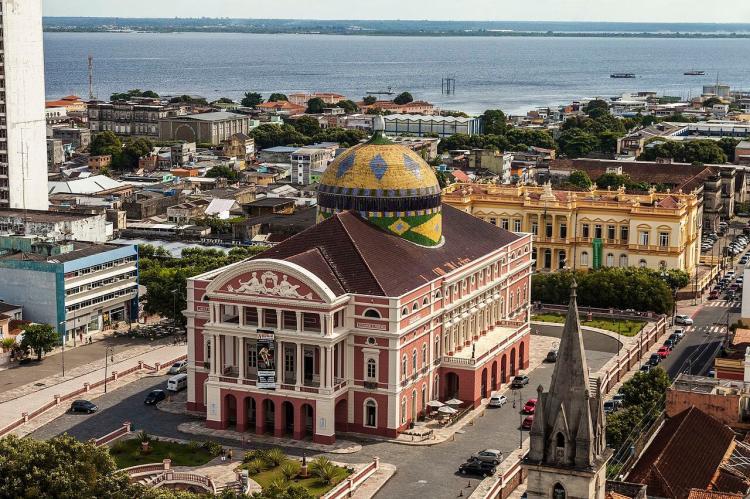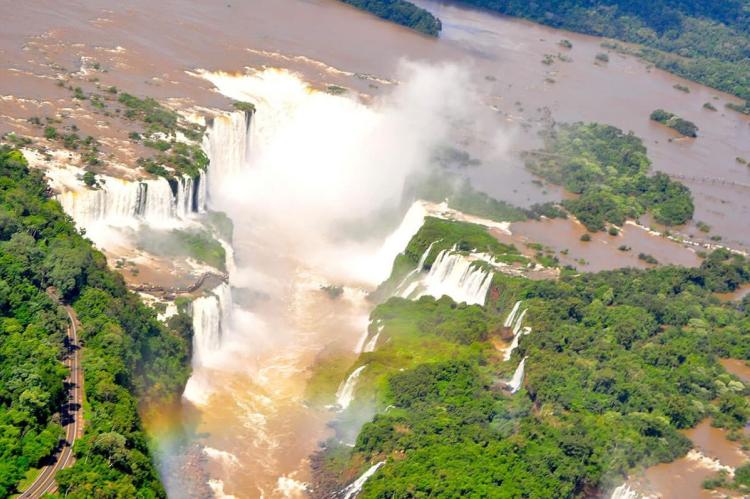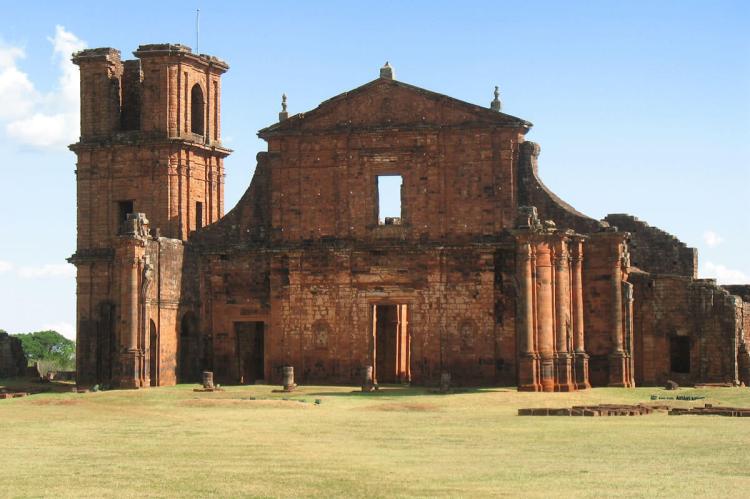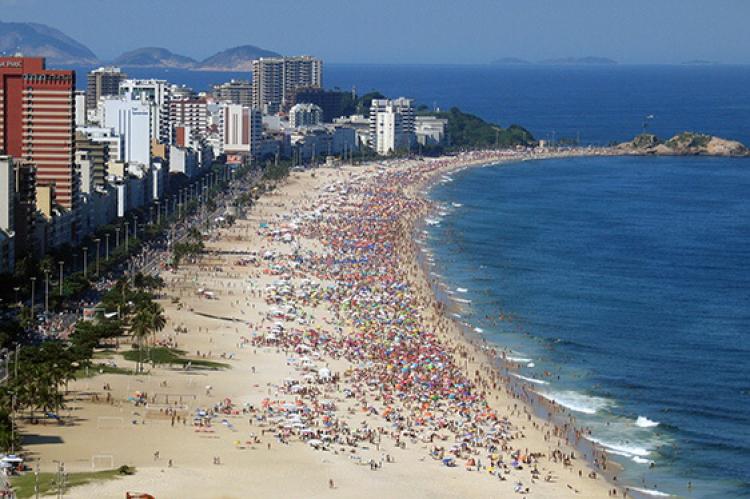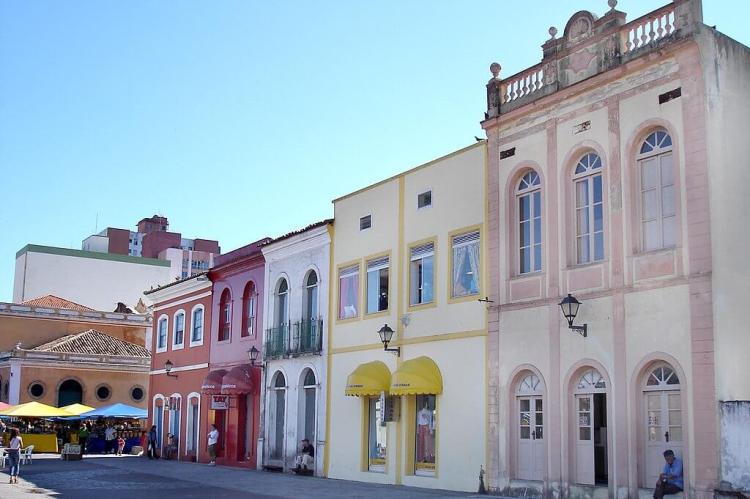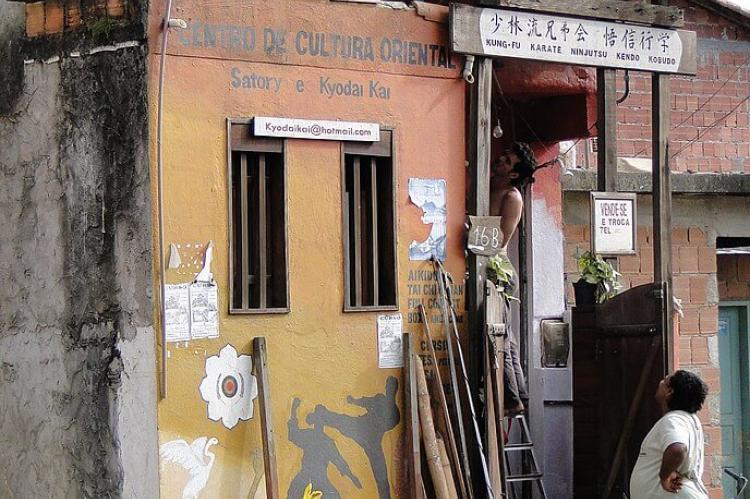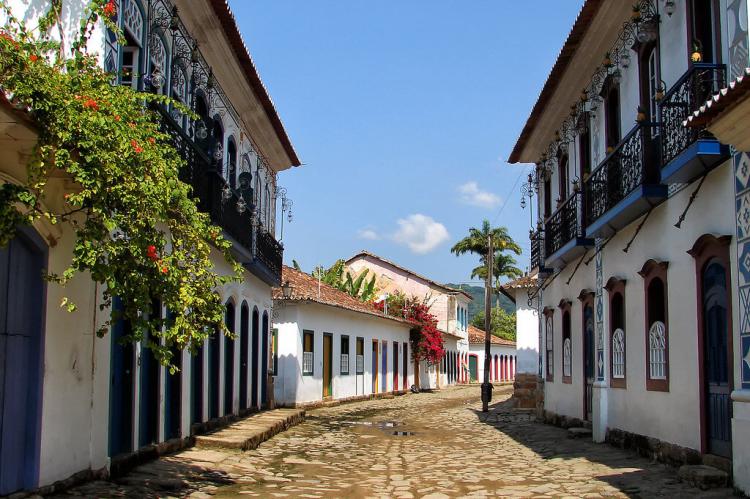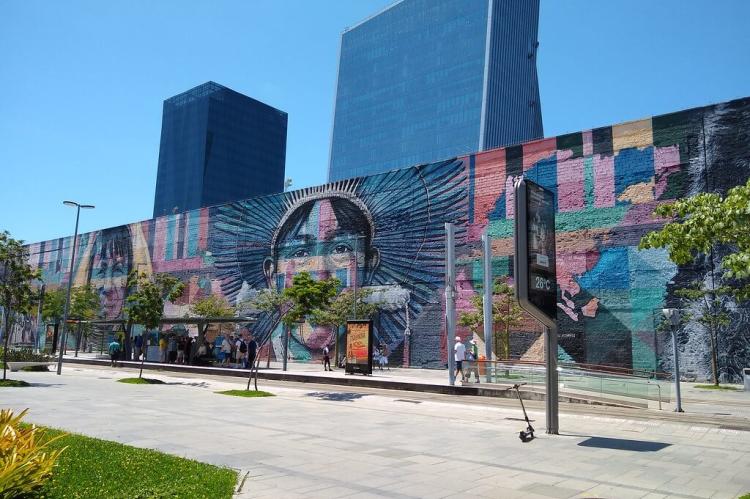Brazil: Cultural Landscape
Brazil has a rich and diverse cultural landscape shaped by a fusion of indigenous, European, African, and immigrant influences. Its vast size and multicultural heritage contribute to a vibrant and varied cultural scene evident in its arts, music, literature, cuisine, and traditions.
The Cultural Landscape of Brazil
Brazil has a rich and diverse cultural landscape shaped by its history, indigenous heritage, African influence, European colonization, and immigrant communities. The country is known for its vibrant arts, music, dance, cuisine, literature, and religious practices.
-
Indigenous Heritage: Brazil has a significant indigenous population with diverse ethnic groups and languages. Indigenous cultures have made lasting contributions to Brazilian art, spirituality, and traditional practices.
-
Portuguese Influence: Brazil was colonized by the Portuguese in the 16th century, which left a lasting impact on its language, architecture, and customs. Portuguese is the official language of Brazil and is widely spoken throughout the country.
-
African Influence: Brazil has a strong African influence due to the transatlantic slave trade. Enslaved Africans brought their languages, religions, music, and culinary traditions, developing unique Afro-Brazilian cultures, such as capoeira, samba, and Candomblé.
-
Carnival: Brazil is famous for its annual Carnaval celebration, particularly in Rio de Janeiro and Salvador. Carnival is a vibrant festival of music, dance, colorful costumes, and parades, where samba and other traditional rhythms take center stage.
-
Music: Brazil is known for its diverse music styles, including bossa nova, samba, choro, forró, MPB (Música Popular Brasileira), and funk carioca. Prominent Brazilian musicians like Tom Jobim, Vinicius de Moraes, Caetano Veloso, and Gilberto Gil have achieved international recognition.
-
Literature: Brazilian literature has produced renowned authors such as Machado de Assis, Clarice Lispector, Jorge Amado, and Paulo Coelho. The country has a rich literary tradition, with various genres and themes reflecting Brazil's multicultural identity.
-
Visual Arts: Brazilian artists have made significant contributions to the visual arts. Modernist painters like Tarsila do Amaral and Candido Portinari have influenced the art world, and contemporary artists such as Beatriz Milhazes and Vik Muniz have gained global recognition.
-
Gastronomy: Brazilian cuisine is diverse and reflects its multicultural roots. Feijoada (a black bean and pork stew), pão de queijo (cheese bread), acarajé (deep-fried black-eyed pea fritters), and churrasco (barbecue) are some popular dishes. Brazil is also known for its coffee production and consumption.
-
Religion: The religious landscape of Brazil is diverse, with Roman Catholicism being the dominant faith. However, Afro-Brazilian beliefs like Candomblé and Umbanda, as well as indigenous spiritual practices, have a significant presence, blending with Catholicism in syncretic forms.
-
Regional Differences: Brazil is a vast country with diverse regional cultures. Each region has unique traditions, dialects, music styles, and local festivals. The northeastern region is known for its folklore and forró music, while the southern region has strong European influences and a prominent German and Italian heritage.
Contemporary Influences on Brazilian Culture
The following are just a few examples of contemporary influences shaping Brazilian culture. The country is unique and vibrant, and its culture constantly evolves.
-
Globalization: Globalization has had a profound impact on Brazilian culture. The country has become increasingly integrated into the global economy, increasing exposure to foreign cultures. This has been reflected in the country's cuisine, music, and art.
-
Immigration: Immigration has also been a significant influence on Brazilian culture. The country has a long history of welcoming immigrants, which has added to the diversity of the country's population. This diversity has been reflected in the country's cuisine, music, and art.
-
Technology: Technology has also had a significant impact on Brazilian culture. The Internet and mobile phones have become ubiquitous in the country, profoundly impacting how people communicate, learn, and consume entertainment. This has led to greater exposure to foreign cultures and a more globalized outlook.
-
The Arts: The arts are also a significant force in Brazilian culture. The country has a thriving theater scene, a vibrant music scene, and a growing visual arts scene. The arts allow Brazilians to express their identity and connect. This has led to a more creative and expressive culture.
Challenges Facing Brazilian Culture
The following are just some of the challenges facing Brazilian culture today. Even though the country faces some complex issues, it is a resilient society with a rich culture. It remains to be seen how Brazilians will overcome these challenges and shape their culture in the future.
-
Economic Inequality: Brazil has a relatively high level of economic inequality. This is due to several factors, including the country's history of slavery, reliance on natural resources, and proximity to Argentina. The economic disparity is causing social tensions and is making it difficult for Brazilians to share in the country's economic prosperity.
-
Environmental Degradation: Brazil faces several environmental challenges, including deforestation, pollution, and climate change. These challenges harm the country's natural resources and threaten many Brazilians' livelihoods.
-
Political Polarization: Brazil has a long history of political instability. However, the country has become increasingly polarized in recent years. This polarization makes it difficult for the government to address the country's challenges.
-
Violence: Brazil has a relatively high level of violence compared to other countries in Latin America. This violence is a challenge to Brazilian culture, making it difficult for the government to maintain its reputation as a safe and peaceful destination.
-
Immigration: Brazil has a long history of welcoming immigrants, a significant factor in shaping the country's culture. However, the recent influx of immigrants from Venezuela and other South American countries has strained resources and led to some social tension.

The official flag of Brazil
Cultural Geography of Brazil
Largest Cities / Metro Areas
Ranked by population estimate (2021):
-
São Paulo (12,396,000): São Paulo, the largest city in Brazil and South America, is a dynamic and bustling metropolis that pulses with energy. With its towering skyscrapers, diverse neighborhoods, and a population representing a mix of cultures worldwide, the city is a melting pot of experiences. São Paulo is renowned for its vibrant arts scene, culinary delights, and thriving economy.
-
Rio de Janeiro (6,775,000): Located on the Atlantic coast, the vibrant city of Rio de Janeiro, often referred to as Rio, is known for its natural beauty, including its beaches, mountains, and rainforests. The city also has several iconic landmarks, such as the Christ the Redeemer statue, Sugarloaf Mountain, and the Maracanã Stadium. In addition, Rio de Janeiro is a popular tourist destination and famous for its Carnaval festival, one of the world's largest and most popular festivals.
-
Brasilia (3,094,000): Brasília, the capital of Brazil, is a unique and modern city known for its innovative urban design and architectural marvels. Brasília was purposefully planned and constructed from scratch in the 20th century, with its layout resembling an airplane when viewed from above. The city is renowned for its striking modernist architecture, the most prominent of which include the Metropolitan Cathedral of Brasília, the National Congress, and the Palácio da Alvorada (the official residence of the President of Brazil).
-
Salvador (2,900,000): Salvador, located on the northeastern coast of Brazil, is a captivating city that showcases a rich blend of history, culture, and natural beauty. Known for its vibrant Afro-Brazilian heritage, Salvador is renowned for its lively music, dance, and cuisine. The city's historic center, Pelourinho, is a UNESCO World Heritage site characterized by its colorful colonial buildings, cobblestone streets, and vibrant atmosphere. Salvador is also blessed with beautiful beaches, including Porto da Barra and Farol da Barra.
-
Fortaleza (2,700,000): Fortaleza, located on the northeastern coast of Brazil, is a vibrant city known for its stunning beaches, bustling markets, and rich culture. Year-round sunshine and warm temperatures make it a popular destination for sun-seekers and beach lovers. The historic city center, known as Centro, features charming colonial architecture, vibrant street markets, and cultural landmarks like the Metropolitan Cathedral and the Dragão do Mar Cultural Center. Fortaleza is also famous for its cuisine, fresh seafood dishes and regional delicacies.
-
Manaus (2,255,000): Manaus is a unique and vibrant city surrounded by breathtaking natural beauty. Known as the "Gateway to the Amazon," Manaus is a hub for exploring the world's largest tropical rainforest. The city is famous for its stunning architecture, notably the opulent Teatro Amazonas, a grand opera house. The Meeting of the Waters, where the dark Rio Negro and the muddy Solimões rivers merge to form the mighty Amazon River, can be witnessed near Manaus. Manaus offers a blend of urban infrastructure and natural wonders, making it a captivating destination for adventure-seekers and nature enthusiasts.
-
Belo Horizonte (2,530,000): Belo Horizonte is the capital of Minas Gerais in southeastern Brazil, known for its modern architecture, broad avenues, and bustling urban atmosphere. The city is surrounded by beautiful mountains and is characterized by its stunning panoramic views. Belo Horizonte offers a mix of cultural attractions, including museums, theaters, and art galleries that showcase the region's rich history and artistic heritage. The city is also renowned for its culinary scene, with various traditional Brazilian dishes and regional specialties.
-
Curitiba (1,963,000): Curitiba, located in southern Brazil, is a city known for its innovative urban planning, environmental sustainability, and high quality of life. Curitiba offers a unique and harmonious blend of nature and urban living. The city boasts numerous parks and gardens, such as the beautiful Botanical Garden and the expansive Barigui Park. Curitiba is also recognized for its efficient bus system, which incorporates dedicated lanes and innovative design features. The city's cultural scene is vibrant, with various museums, theaters, and art galleries showcasing local and international talent.
-
Recife (1,661,000): Recife, located on the northeastern coast of Brazil, is a lively and culturally rich city known for its beautiful beaches, vibrant music scene, and fascinating history. With its strategic coastal position, Recife has played a significant role in Brazil's colonial past. It is often called the "Venice of Brazil" due to its numerous canals and bridges. Recife Antigo, the city's historic center, features colonial buildings, cobblestone streets, and a vibrant atmosphere. The city is also renowned for its rich musical heritage, with traditional rhythms filling the air during the annual Carnival festivities and throughout the year.
-
Goiânia (1,555,000): Goiânia, located in central Brazil, is a modern and vibrant city known for its wide avenues, lush green spaces, and thriving cultural scene. Planned and built in the 20th century, Goiânia is characterized by its spacious urban layout and well-maintained parks. Goiânia offers a range of cultural attractions, including museums, theaters, and art galleries that showcase the region's artistic and historical heritage. The city is also known for its lively music scene. The local cuisine of Goiás is also a highlight, featuring traditional dishes such as pamonha and empadão goiano.
-
Belém (1,506,000): Belem, located in northern Brazil's state of Pará, is a city that combines rich history, vibrant culture, and stunning natural surroundings. Situated at the mouth of the Amazon River, Belem offers visitors a taste of the Amazon Rainforest with its lush greenery and diverse wildlife. The city's UNESCO-listed Old City district showcases well-preserved colonial architecture, including the impressive Forte do Castelo. Belem is renowned for its cuisine influenced by indigenous, African, and Portuguese flavors.
-
Porto Alegre (1,492,000): Porto Alegre, located in the southernmost state of Rio Grande do Sul, is a vibrant city known for its rich cultural heritage, progressive outlook, and beautiful waterfront setting. As the state capital, Porto Alegre offers modern amenities and historical charm. The city boasts a thriving arts scene, with numerous museums, galleries, and theaters. In addition, visitors can explore the charming old town, walk along the picturesque Guaíba River, and enjoy the lively atmosphere of the city's parks and plazas.
Administrative Divisions
Brazil comprises 26 states and one federal district. The states are subdivided into municipalities. In addition, the states are conventionally divided among five regions based on geographic location.
Federal District
- Distrito Federal (DF) (Capital: Brasília): Brasília, located in the central-west region of the country, is Brazil's modern capital, known for its unique urban planning, futuristic architecture, and political significance.
States
Following is an alphabetical list of Brazil's 26 states, followed by the state abbreviation and the capital in parentheses:
-
Acre (AC) (Capital: Rio Branco): Acre, located in northwestern Brazil, is known for its Amazon rainforest, rich biodiversity, and indigenous cultures.
-
Alagoas (AL) (Capital: Maceió): Alagoas, located in northeastern Brazil, is known for its beautiful beaches, coconut groves, and vibrant cultural traditions, including music and dance.
-
Amapá (AP) (Capital: Macapá): Amapá is located in the northern region of Brazil and is known for its ecological corridor and diverse ecosystems, including Amazon rainforests and rivers.
-
Amazonas (AM) (Capital: Manaus): Amazonas, located in the northwestern corner of Brazil, is the heart of the Amazon Rainforest and is known for its incredible biodiversity, including unique wildlife and indigenous communities.
-
Bahia (BA) (Capital: Salvador): Bahia, located in the northeast region of Brazil, is famous for its Afro-Brazilian culture, vibrant festivals, beautiful beaches, and historic architecture.
-
Ceará (CE) (Capital: Fortaleza): Ceará, located on the northeastern coast, boasts stunning beaches, dunes, and a lively cultural scene, including music, dance, and local cuisine.
-
Espirito Santo (ES) (Capital: Vitória): Espírito Santo, in southeastern Brazil, is known for its picturesque coastline, colonial architecture, and important port city.
-
Goiás (GO) (Capital: Goiânia): Goiás, located in the central-west region, is rich in history, featuring colonial towns, natural beauty, and agricultural landscapes.
-
Maranhão (MA) (Capital: São Luís): Maranhão, in northeastern Brazil, is known for its unique blend of indigenous, African, and European cultures, as well as its extensive coastline.
-
Mato Grosso (MT) (Capital: Cuiabá): Mato Grosso, located in the central-west region, is characterized by its vast landscapes, including the Pantanal wetlands and the Amazon Rainforest.
-
Mato Grosso do Sul (MS) (Capital: Campo Grande): Mato Grosso do Sul, located in the southern part of the central-west region, is also home to the southern part of the Pantanal, a diverse and abundant tropical wetland ecosystem.
-
Minas Gerais (MG) (Capital: Belo Horizonte): Minas Gerais, in southeastern Brazil, is known for its historical importance during the Brazilian colonial period, as well as its beautiful architecture and cuisine.
-
Pará (PA) (Capital: Belém): Pará is located at the mouth of the Amazon River in northern Brazil and is known for its rainforests, rivers, and cultural diversity.
-
Paraíba (PB) (Capital: João Pessoa): Paraíba, located in the Brazilian northeast, features beautiful beaches, unique crafts, and a mix of indigenous and colonial influences.
-
Paraná (PR) (Capital: Curitiba): Paraná, in southern Brazil, is known for its modern cities, diverse landscapes, and strong European influence.
-
Pernambuco (PE) (Capital: Recife): Pernambuco, located in the northeast region of Brazil, is known for its rich history, vibrant cultural scene, and beautiful coastline.
-
Piauí (PI) (Capital: Teresina): Piauí, located in the northeast region of Brazil, is known for its arid landscapes, historical sites, and a mix of indigenous and colonial heritage.
-
Rio de Janeiro (RJ) (Capital: Rio de Janeiro): Rio de Janeiro, in southeastern Brazil, is famous for its iconic beaches, Carnival celebrations, and stunning landscapes.
-
Rio Grande do Norte (RJ) (Capital: Natal): Rio Grande do Norte, located in the northeastern region of the country, offers beautiful beaches, dunes, and historical sites.
-
Rio Grande do Sul (RS) (Capital: Porto Alegre): Rio Grande do Sul, in the southern region of Brazil, is known for its distinct cultural heritage, gaucho traditions, and varied landscapes.
-
Rondônia (RO) (Capital: Porto Velho): Rondônia, in northwestern Brazil, is characterized by its Amazon Rainforest, rivers, and natural resources.
-
Roraima (RR) (Capital: Boa Vista): In the north, Roraima is known for its unique landscapes, including tepuis (tabletop mountains) and indigenous cultures.
-
Santa Catarina (SC) (Capital: Florianópolis): Santa Catarina, in southern Brazil, is known for its stunning beaches, German heritage, and natural beauty.
-
São Paulo (SP) (Capital: São Paulo): São Paulo, in the Southeast, is Brazil's economic powerhouse, known for its cultural diversity, urban sprawl, and thriving arts scene.
-
Sergipe (SE) (Capital: Aracaju): Sergipe, in the northeast region along the Atlantic coast, is known for its historic towns, beautiful beaches, and strong influence of African culture.
-
Tocantins (TO) (Capital: Palmas): Tocantins, in the north region, is Brazil's youngest state and features savannas, rivers, and archaeological sites, offering a mix of natural and cultural attractions.
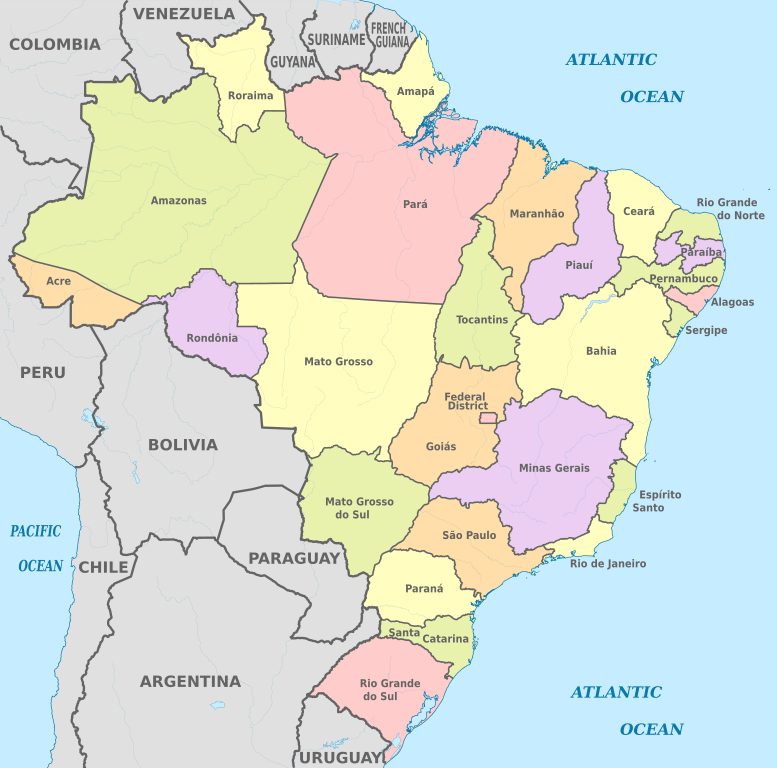
Administrative divisions of Brazil
Geographic Regions (Zones)
North Region
The equatorial north, also known as the Amazon (or Amazônia), includes, from west to east, the states of Rondônia, Acre, Amazonas, Roraima, Pará, Amapá, and Tocantins. With 3,869,638 sq km (1,494,075 sq mi), the North is Brazil's largest region, covering over 45% of its territory.
Northeast Region
Nine states make up the Northeast Region: Alagoas, Bahia, Ceará, Maranhão, Paraíba, Pernambuco, Piauí, Rio Grande do Norte and Sergipe. The Northeast region, with 1,561,178 sq km (602,774 sq mi), covers over 18% of the national territory. Its principal biome is the Caatinga.
Central-West Region
The Central-West Region (or Center-West Region) consists of the states of Goiás, Mato Grosso, and Mato Grosso do Sul, as well as the Federal District, the site of Brasília, the national capital. The region, with 1,612,077 sq km (622,426 sq mi), covers approximately 19% of the national territory. Its main biome is the Cerrado.
Southeast Region
The Southeast Region consists of Espírito Santo, Minas Gerais, Rio de Janeiro, and São Paulo. Its total 927,286 sq km (358,027 sq mi) corresponds to approximately 11% of the national territory. Initially, the principal biome of the Southeast was the Atlantic Forest. The region has the largest share of the country's population and is where most of Brazil's industrial production occurs. The state of São Paulo alone accounts for half of the country's industries.
South Region
The South Region has three states: Paraná, Rio Grande do Sul, and Santa Catarina. The temperate region covers 577,214 sq km (222,863 sq mi), just under 7% of the national territory. In addition to the Atlantic Forest and pine woods, much of which was cleared in the post-World War II period, the South contains Pampa grasslands.
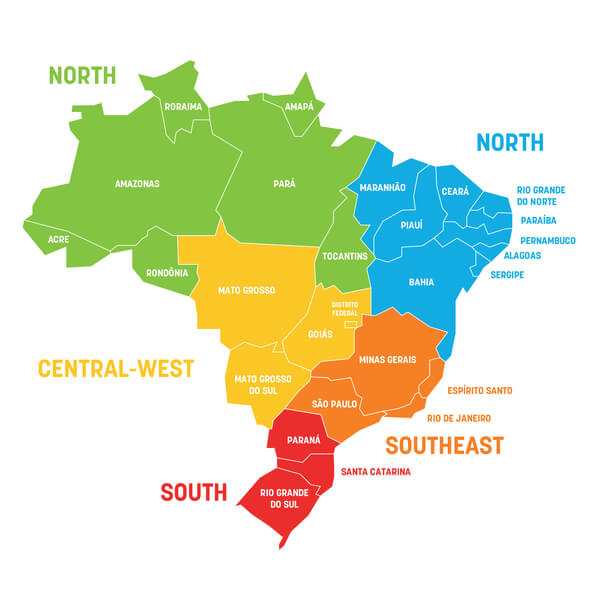
Political map of the Geographic regional divisions of Brazil
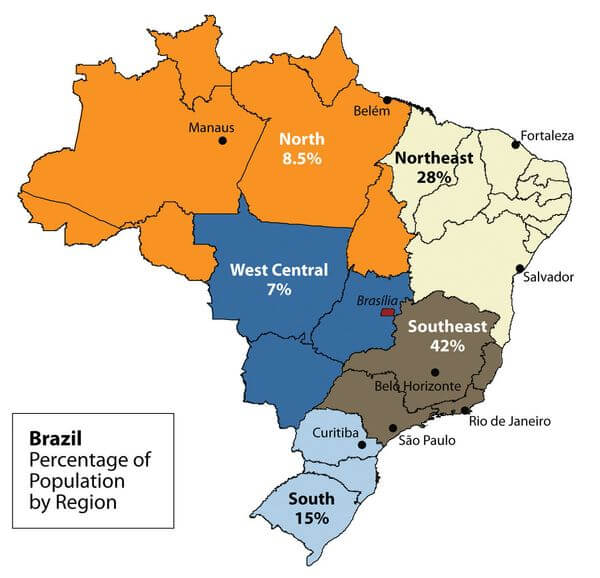
Geographical regions of Brazil by population percentage
Historical, Cultural, and Natural Landmarks
Brazil is a vast and diverse country boasting many historical, cultural, and natural landmarks. Here are some notable landmarks in each category, separated by region:
North Region
The North Region of Brazil is home to many historical, cultural, and natural landmarks and several protected areas. Here are some notable ones:
Historical Landmarks
-
Fortaleza de São José de Macapá (Macapá Fortress): Located in Macapá, Amapá state, this 18th-century fortress is a well-preserved historical landmark and a testament to the Portuguese colonial era in the region.
-
Museu do Homem do Norte (Museum of the Man of the North): Situated in Belém, Pará state, this museum showcases the cultural and historical heritage of the region's indigenous populations through artifacts, exhibitions, and interactive displays.
-
Museu Paraense Emílio Goeldi (Emílio Goeldi Museum): Found in Belém, this renowned museum focuses on natural history, ethnography, and archaeology, providing insights into the diverse ecosystems and cultural heritage of the Amazon.
Cultural Landmarks
-
Teatro Amazonas (Amazon Theatre): Located in Manaus, this iconic opera house is an architectural gem and one of Brazil's most important cultural landmarks. It hosts performances, concerts, and cultural events throughout the year.
-
Ver-o-Peso Market: Situated in Belém, this bustling market is a vibrant hub of Amazonian culture, offering a wide array of local produce, handicrafts, and traditional food. It provides an authentic glimpse into the region's culinary and cultural traditions.
-
Alter do Chão: Alter do Chão is a small village located near Santarém, specifically on the banks of the Tapajós River. It is often called the "Caribbean of the Amazon" due to its stunning white sand beaches and crystal-clear waters. Alter do Chão has become a popular tourist destination for its beautiful scenery, water activities, and relaxed atmosphere.
Natural Landmarks
-
Meeting of the Waters: Near Manaus, the Meeting of the Waters is a unique natural phenomenon where the dark waters of the Negro River and the sandy-colored waters of the Solimões River flow side by side without immediately mixing, creating a stunning contrast.
-
Lençóis Maranhenses National Park: Located in Maranhão state, this breathtaking national park features vast expanses of white dunes interspersed with stunning blue and green lagoons, creating a surreal landscape of unparalleled beauty.
-
Monte Roraima: Situated on the border of Brazil, Venezuela, and Guyana, this tabletop mountain is considered a sacred place by indigenous communities. Its unique geological formations and endemic flora make it a popular destination for hikers and nature lovers.
Protected Areas
-
Amazon Rainforest: The North Region is home to a significant portion of the Amazon rainforest, a globally recognized protected area. It encompasses various national parks, such as Jaú National Park, Tapajós National Forest, and Mamirauá Sustainable Development Reserve, which preserve the region's unique biodiversity.
-
Marajó Island: Located in Pará, Marajó Island is the world's largest fluvial island and harbors a diverse ecosystem. It is home to several conservation units, including Marajó Island Environmental Protection Area and Marajó Bay Ecological Station, safeguarding its rich biodiversity.
Northeast Region
The Northeast Region of Brazil is known for its rich history, vibrant culture, and diverse natural landscapes. Here are some of the notable historical, cultural, and natural landmarks, as well as protected areas, in the Northeast Region:
Historical Landmarks
-
Pelourinho (Historic Center of Salvador): Located in Salvador, Bahia, Pelourinho is a UNESCO World Heritage Site and one of Brazil's most well-preserved colonial neighborhoods. It showcases colorful Portuguese colonial architecture, historical churches, and cultural sites.
-
São Francisco Church and Convent: Situated in Olinda, Pernambuco, this 16th-century church and convent are renowned for their intricate Baroque architecture and ornate golden interior, reflecting the region's colonial heritage.
-
Historic Center of São Luís: Found in São Luís, Maranhão, the historic center is another UNESCO World Heritage Site. It features well-preserved Portuguese colonial architecture, including colorful azulejo tiles, and is known for its vibrant cultural scene.
Cultural Landmarks
-
Bumba Meu Boi: This traditional folk festival is celebrated throughout the Northeast Region, particularly in Maranhão. It combines music, dance, theater, and folklore, showcasing vibrant costumes, rhythmic beats, and dramatic performances.
-
Forró Music and Dance: Forró is a popular music and dance style originating in the Northeast Region, particularly in states like Pernambuco and Bahia. It represents the region's lively and joyful spirit and is celebrated in festivals and cultural events.
Natural Landmarks
-
Lençóis Maranhenses National Park: Located in Maranhão, this stunning national park features vast white dunes dotted with turquoise lagoons, creating a surreal and breathtaking landscape.
-
Chapada Diamantina National Park: Situated in Bahia, this national park is known for its diverse ecosystems, including mountains, waterfalls, caves, and tabletop plateaus. It offers excellent opportunities for hiking, swimming, and exploring natural wonders.
Protected Areas
-
Fernando de Noronha: This archipelago in Pernambuco is a protected marine park and a UNESCO World Heritage Site. It boasts pristine beaches, crystal-clear waters, and abundant marine life, making it a paradise for diving and snorkeling enthusiasts.
-
Jericoacoara National Park: Located in Ceará, this national park is known for its stunning dunes, lagoons, and beaches. It is a popular destination for windsurfing, kitesurfing, and enjoying the region's natural beauty.
Central-West Region
The Central-West Region of Brazil is characterized by its unique blend of history, culture, and diverse natural landscapes. Here are some notable historical, cultural, and natural landmarks, as well as protected areas, in the Central-West Region:
Historical Landmarks
-
Brasília: The capital city of Brazil, Brasília, is a UNESCO World Heritage Site known for its modernist architecture and urban planning. Designed by architect Oscar Niemeyer, the city features iconic buildings such as the Metropolitan Cathedral, the National Congress, and the Presidential Palace.
-
Chapada dos Veadeiros: This region in Goiás state is home to ancient rock formations, waterfalls, and rich biodiversity. It includes the historic town of Alto Paraíso de Goiás and attracts visitors for its natural beauty and spiritual retreats.
Cultural Landmarks
-
Indigenous Heritage: The Central-West Region is home to several indigenous communities; exploring their cultures and traditions is a significant aspect of the region's cultural heritage. Indigenous reservations, such as the Xingu Indigenous Park in Mato Grosso, offer opportunities to learn about indigenous customs and participate in cultural exchanges.
-
Mato Grosso Pantanal: The world's largest wetland stretches across Mato Grosso and Mato Grosso do Sul states. It is a UNESCO World Heritage Site and boasts exceptional biodiversity, including jaguars, capybaras, and various bird species. Visitors can experience ecotourism activities such as wildlife spotting, birdwatching, and river safaris.
Natural Landmarks
-
Bonito: Located in Mato Grosso do Sul, Bonito is known for its crystal-clear rivers, stunning waterfalls, and limestone caves. The region offers opportunities for snorkeling, scuba diving, and exploring unique natural formations like the Blue Lake Cave.
-
Emas National Park: Situated in Goiás, Emas National Park is a UNESCO World Heritage Site and a haven for wildlife, including jaguars, giant anteaters, and rheas. It encompasses diverse ecosystems, such as cerrado (Brazilian savannah), wetlands, and rocky outcrops.
Protected Areas
-
Chapada dos Guimarães National Park: Located in Mato Grosso, this national park is known for its stunning red-rock formations, waterfalls, and rich flora and fauna. It offers hiking trails, rock climbing, and breathtaking vistas of the surrounding landscapes.
-
Serra da Bodoquena National Park: Found in Mato Grosso do Sul, this national park showcases beautiful rivers, caves, and waterfalls within the Serra da Bodoquena mountain range. Visitors can enjoy activities like rafting, trekking, and exploring underground rivers.
Southeast Region
The Southeast Region of Brazil is known for its vibrant cities, historical sites, cultural richness, and diverse natural landscapes. Here are some notable historical, cultural, and natural landmarks, as well as protected areas, in the Southeast Region:
Historical Landmarks
-
Historic Center of Ouro Preto: Located in Minas Gerais, Ouro Preto is a UNESCO World Heritage Site known for its well-preserved colonial architecture. The town is filled with churches, museums, and historical sites that reflect its mining history and Portuguese influence.
-
Paraty: This coastal town in Rio de Janeiro state showcases Portuguese colonial architecture and is renowned for its well-preserved historic center. Paraty played a significant role in Brazil's colonial past as a port for exporting gold and precious stones.
Cultural Landmarks
-
Rio de Janeiro: Brazil's second-largest city is famous for its vibrant culture and iconic landmarks. It is home to the iconic statue of Christ the Redeemer atop Corcovado Mountain, Copacabana and Ipanema beaches, and the annual Carnival festival.
-
São Paulo Museum of Art (MASP): Located in São Paulo, MASP is one of the most important art museums in Latin America. It houses an extensive European and Brazilian art collection, including works by renowned artists such as Van Gogh and Portinari.
Natural Landmarks
-
Serra da Mantiqueira: This mountain range stretches across the states of São Paulo, Minas Gerais, and Rio de Janeiro, offering stunning landscapes, hiking trails, and picturesque towns like Campos do Jordão.
Protected Areas
-
Serra do Cipó National Park: Located in Minas Gerais, this national park features scenic canyons, waterfalls, and diverse fauna and flora. It offers opportunities for hiking, rock climbing, and birdwatching.
-
Itatiaia National Park: Situated on the border of Minas Gerais and Rio de Janeiro, this is Brazil's oldest national park. It encompasses part of the Serra da Mantiqueira and protects high-altitude vegetation, waterfalls, and the iconic Pico das Agulhas Negras mountain.
South Region
The South Region of Brazil is known for its distinctive cultural heritage, historical sites, and beautiful natural landscapes. Here are some notable historical, cultural, and natural landmarks, as well as protected areas, in the South Region:
Historical Landmarks
-
Historic Center of Pelotas: In Rio Grande do Sul, Pelotas showcases well-preserved Portuguese colonial architecture and historical buildings, including the Mercado Central (Central Market) and the Charqueada São João.
-
Historic Center of Florianópolis: Florianópolis, the capital city of Santa Catarina, features a historic center with colorful colonial buildings and landmarks like the Florianópolis Cathedral and the Hercílio Luz Bridge.
Cultural Landmarks
-
Oktoberfest Blumenau: Blumenau in Santa Catarina hosts one of the largest Oktoberfest celebrations outside of Germany, showcasing German culture, music, dancing, and traditional cuisine.
-
São Miguel das Missões: This UNESCO World Heritage Site in Rio Grande do Sul preserves the ruins of the São Miguel Arcanjo Mission, an important Jesuit mission established in the 17th century.
Natural Landmarks
-
Serra do Rio do Rastro: This scenic mountain range in Santa Catarina is renowned for its winding road that offers breathtaking views of the lush landscape as it descends to the coastal region.
Protected Areas
-
Iguaçu National Park: While most of Iguaçu Falls is located in Argentina, the Brazilian side offers stunning views of the waterfalls and provides access to trails and viewpoints within the Iguaçu National Park, a UNESCO World Heritage Site.
-
Aparados da Serra National Park: Situated in Rio Grande do Sul and Santa Catarina, this national park encompasses stunning canyons and impressive cliffs, including the Itaimbezinho and Fortaleza canyons.
-
Serra Geral National Park: Also located in Rio Grande do Sul and Santa Catarina, Serra Geral National Park protects a portion of the Serra Geral mountain range, showcasing unique rock formations, waterfalls, and abundant wildlife.
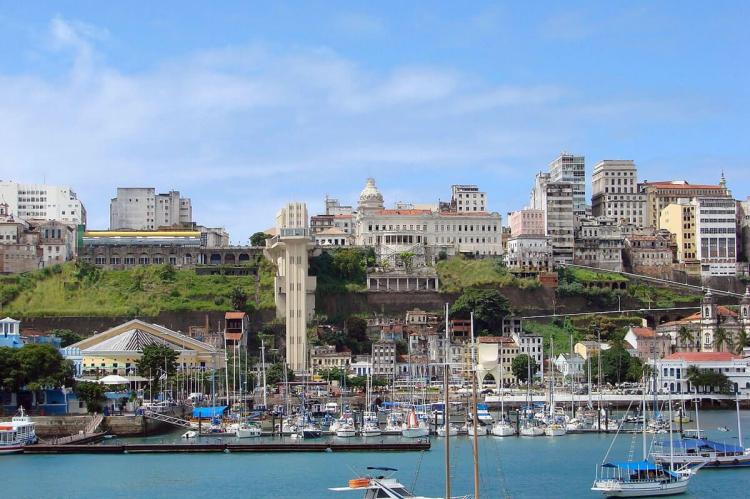
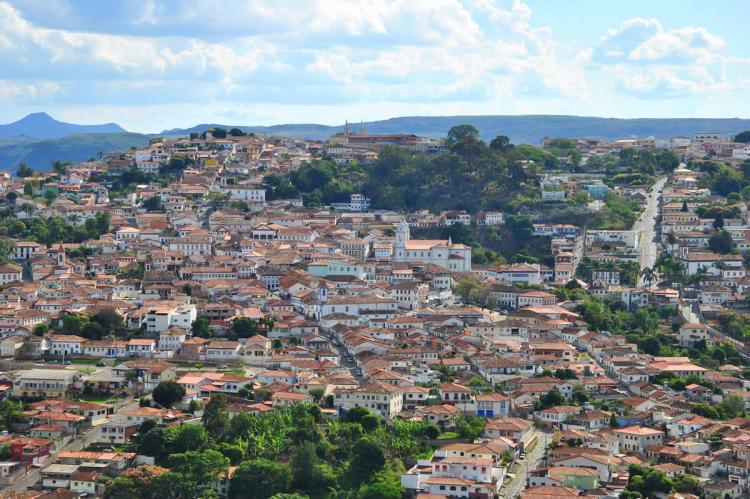
![Guanabara Bay (Brazil) by Zimbres [CC BY-SA 3.0 (https://creativecommons.org/licenses/by-sa/3.0)] Guanabara Bay (Brazil)](/sites/default/files/styles/large/public/guanabara_bay_brazil_opt.jpg?itok=xBemfuDw)
